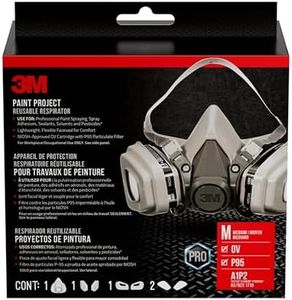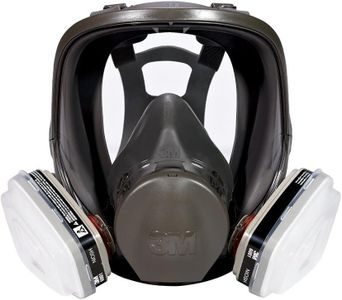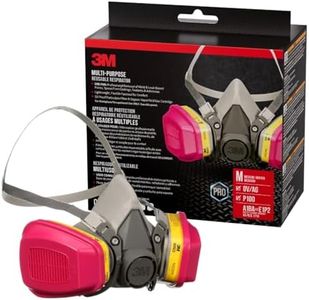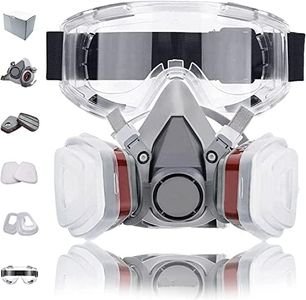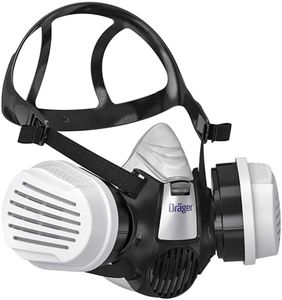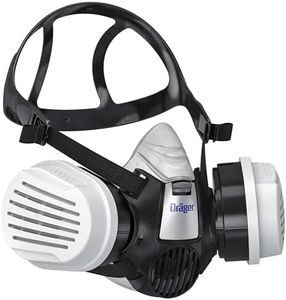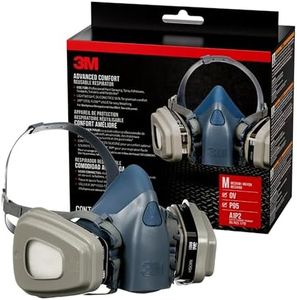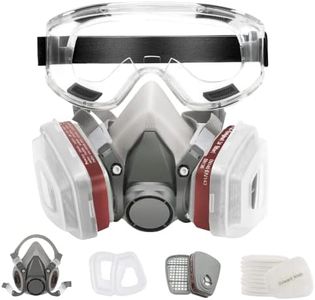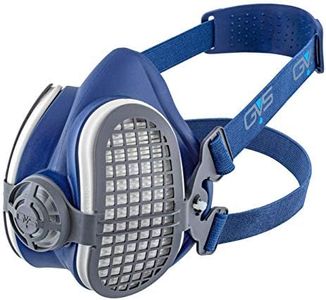We Use CookiesWe use cookies to enhance the security, performance,
functionality and for analytical and promotional activities. By continuing to browse this site you
are agreeing to our privacy policy
10 Best Spray Paint Respirator Mask
From leading brands and best sellers available on the web.Buying Guide for the Best Spray Paint Respirator Mask
Choosing the right spray paint respirator mask is essential to ensure your safety while painting or working with chemicals. These masks protect you from inhaling potentially harmful particles, fumes, and vapors that can be present during spray painting. It's important to understand the different features and specifications so you can pick a mask that fits both your comfort and safety needs. Take time to familiarize yourself with how masks filter air and the fit each type offers, as these choices directly affect your health and work experience.Filter TypeThe filter type determines what kind of particles or chemicals the mask can protect you against. Respirator masks typically use filters rated for particles (like dust and paint mist) or organic vapors (like paint fumes and solvents). Some filters combine both protections. Lower-rated filters may only block simple dust, while higher-rated, combination cartridges are designed for more hazardous fumes. When choosing, consider the specific substances you'll encounter. For simple aerosol spray paints, a particulate filter may do, but for stronger paints or solvents, combination filters labeled for organic vapors are a safer choice.
Fit and SealFit and seal refer to how well the mask conforms to your face and prevents unfiltered air from leaking in. Masks come in various sizes and styles—some cover just the nose and mouth, while others are full-face. A mask that fits snugly without gaps is essential for effective protection. Poor fit reduces safety dramatically. People with facial hair or glasses might require special designs. To pick the right fit, try on if possible or choose a mask size based on manufacturer guides, ensuring it sits comfortably and forms a tight seal when you breathe in.
Comfort and BreathabilityComfort and breathability describe how easy the mask is to wear for long periods and how easily you can breathe through it. Masks with better airflow and soft materials are easier to wear during extended projects. Heavier or tightly fitting masks can make breathing more difficult and cause discomfort. If you plan to spray paint frequently or for long sessions, prioritize masks designed with comfortable head straps, softer face materials, and good ventilation to minimize fatigue.
Reusability and MaintenanceThis spec refers to whether the mask is meant for single or multiple uses, and how easy it is to keep clean. Disposable masks are designed for one-time use and are usually thrown away after one project, while reusable masks have replaceable filters or cartridges. Reusable types may need cleaning and filter replacement, which can be more economical for regular use. If you only need a mask for a single small task, a disposable mask might suffice, but for ongoing projects, picking a reusable model is both cost-effective and environmentally friendly.
Standards and CertificationStandards and certification indicate whether the mask meets certain safety requirements set by organizations (such as NIOSH or EN standards). Certified masks have been tested for effectiveness. Higher standard masks give more assurance that you'll be protected from both small particles and hazardous fumes. Always check for certification labels to make sure the mask can truly protect you, especially if you're working with stronger chemicals or in a professional environment.
